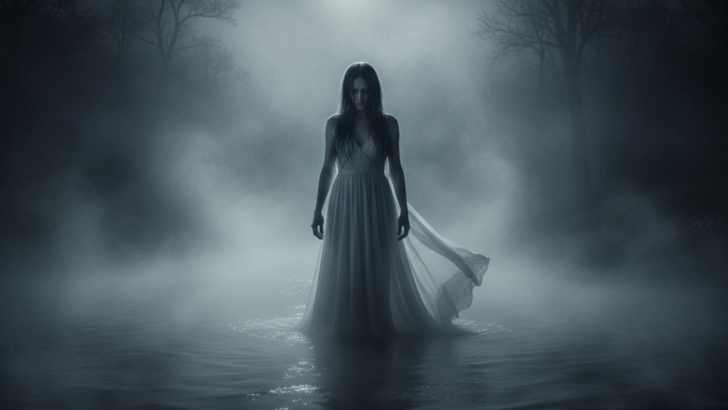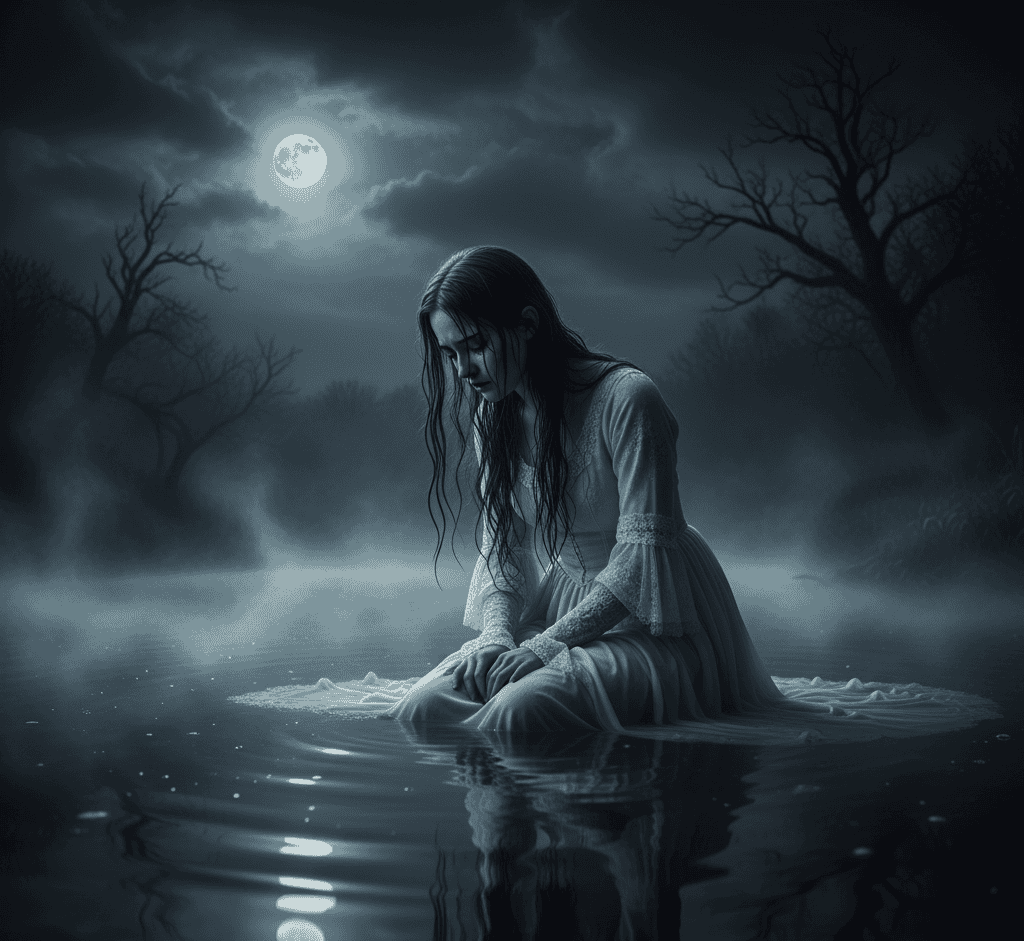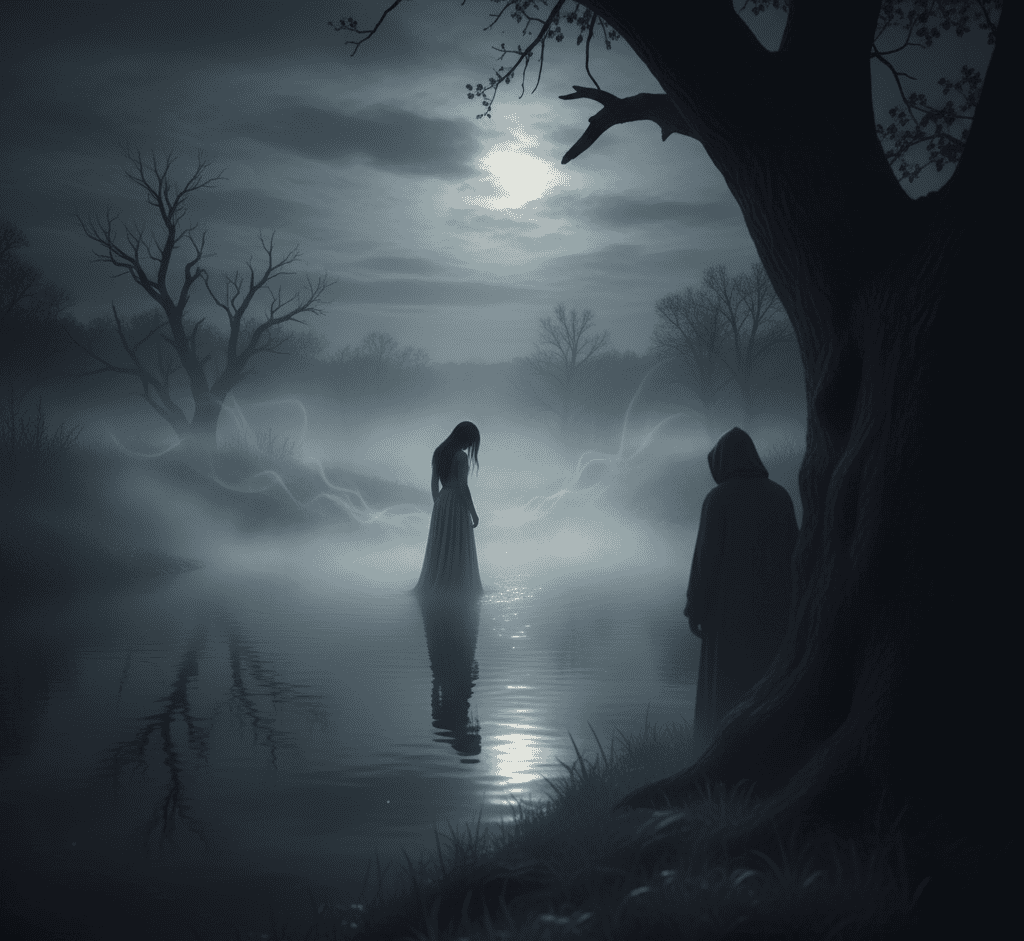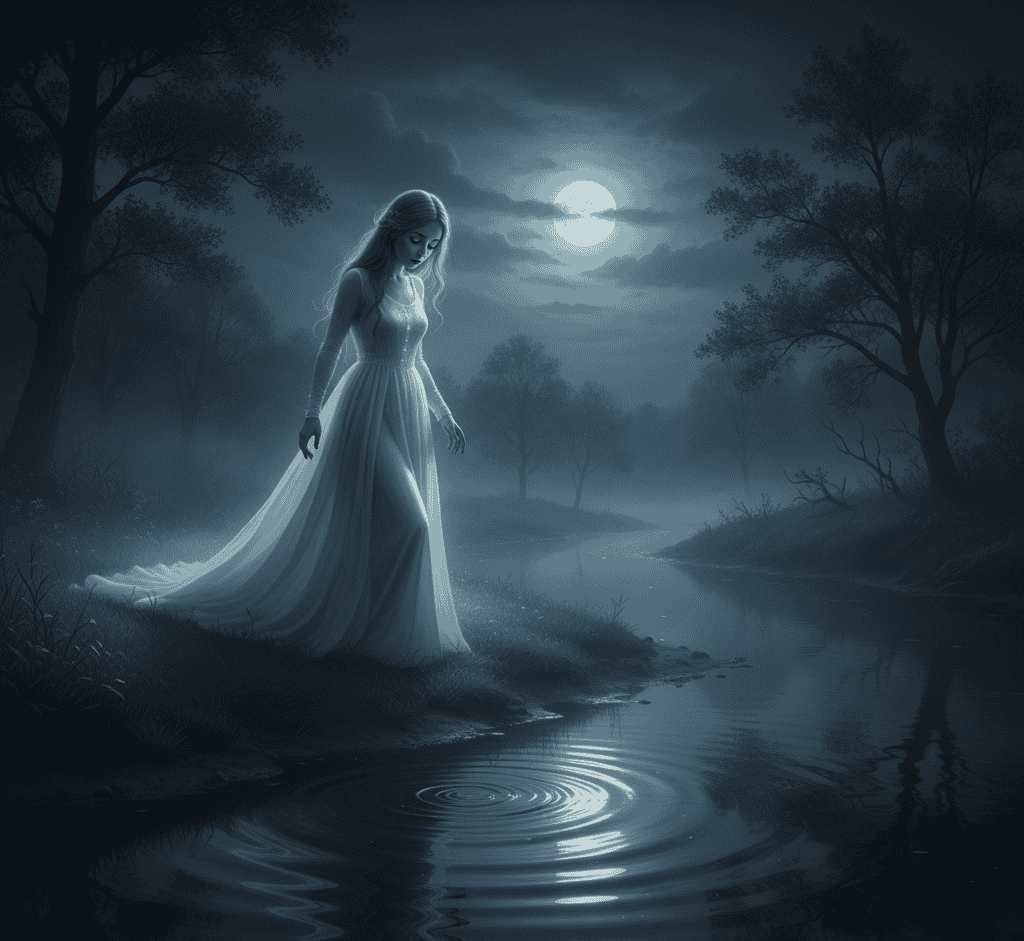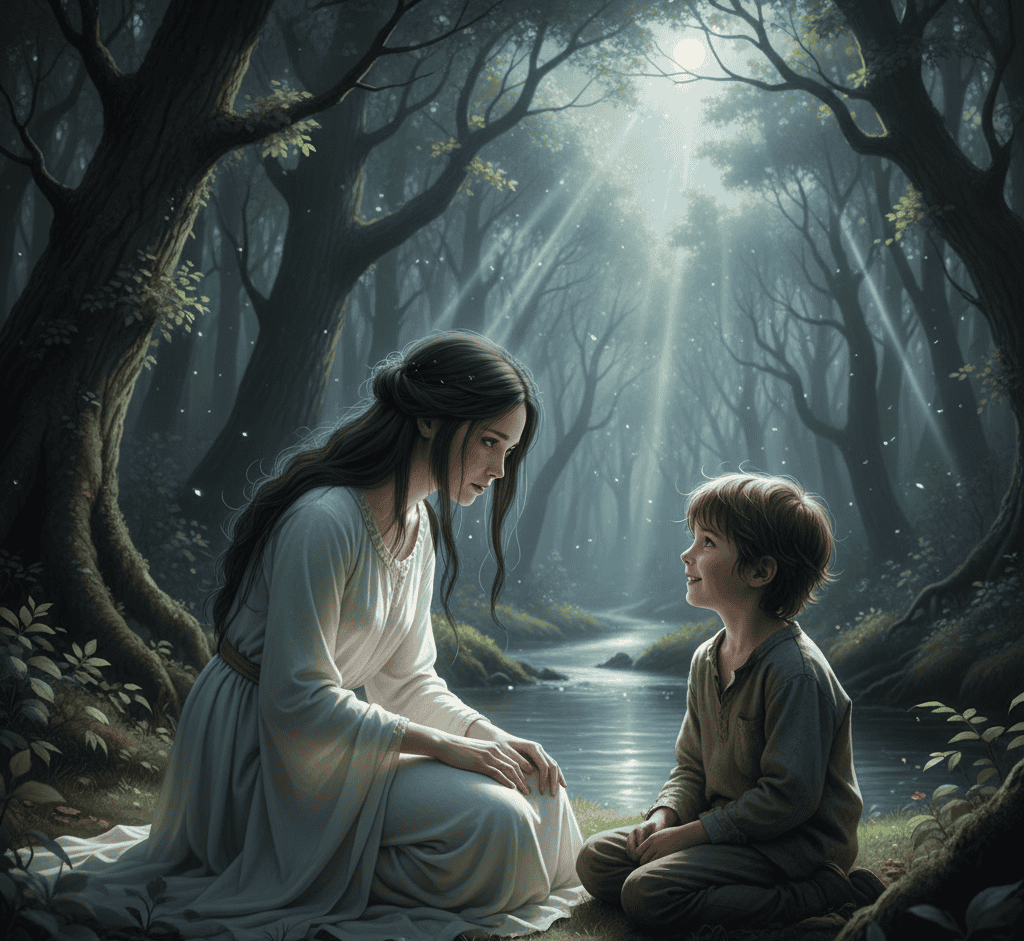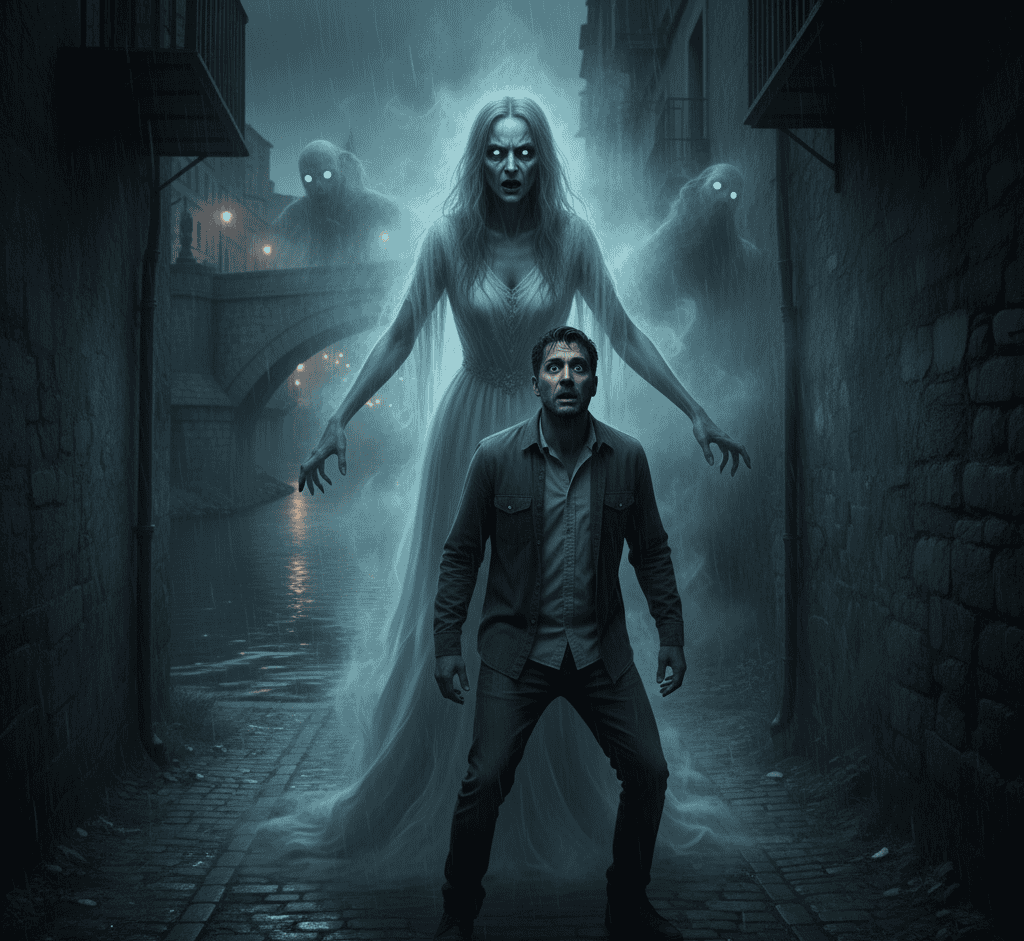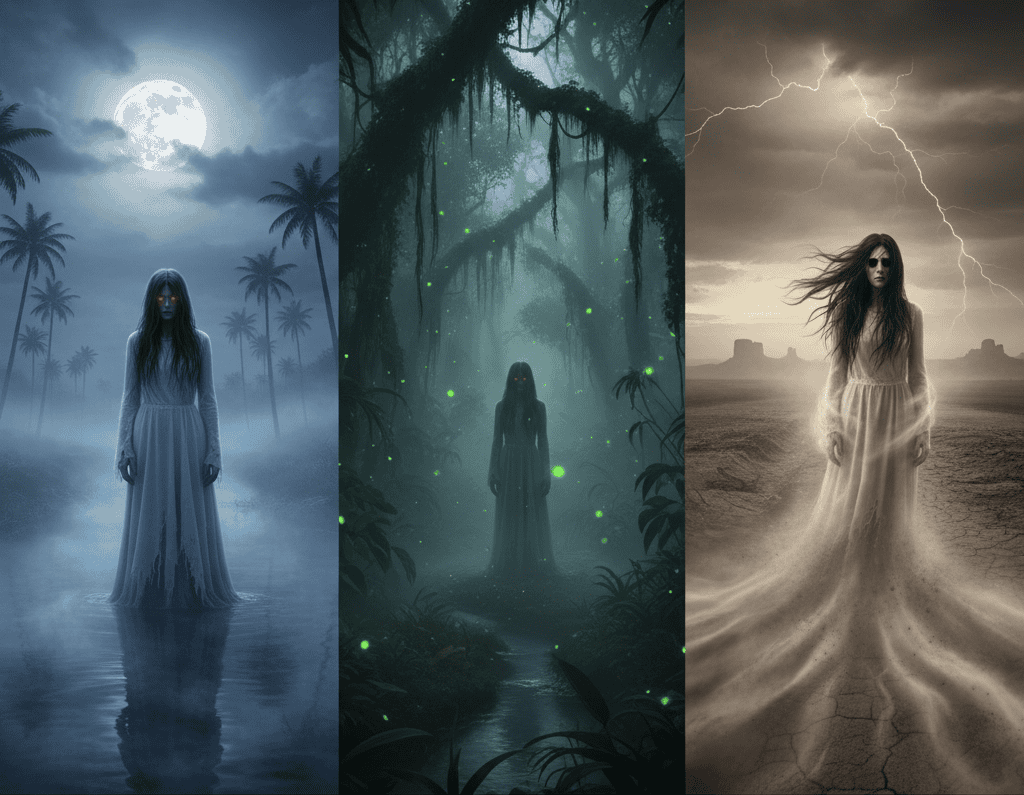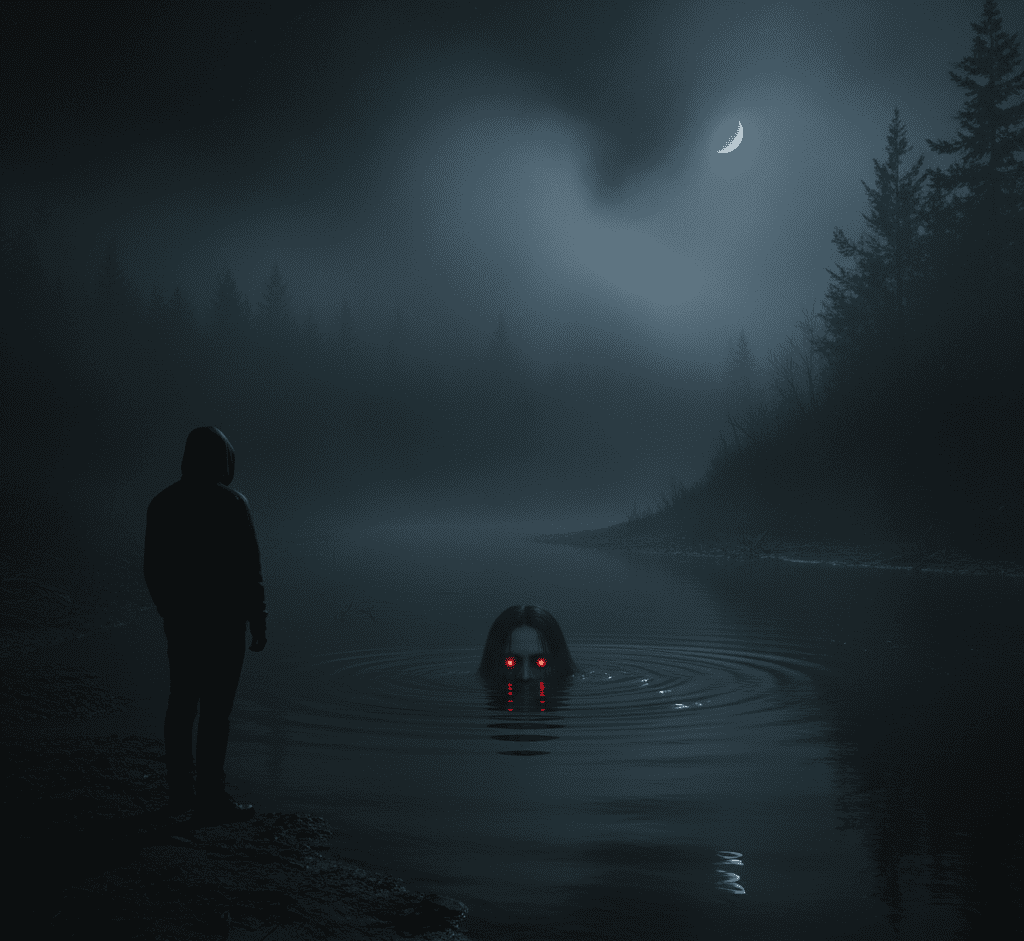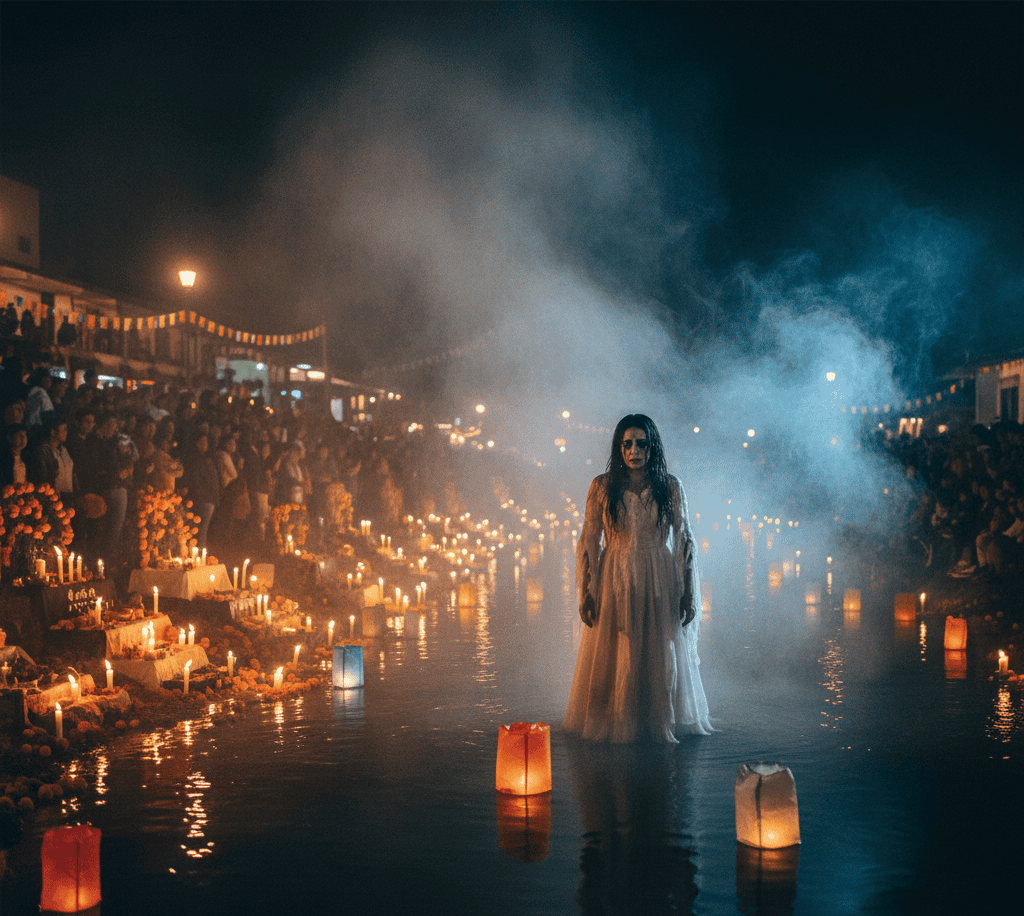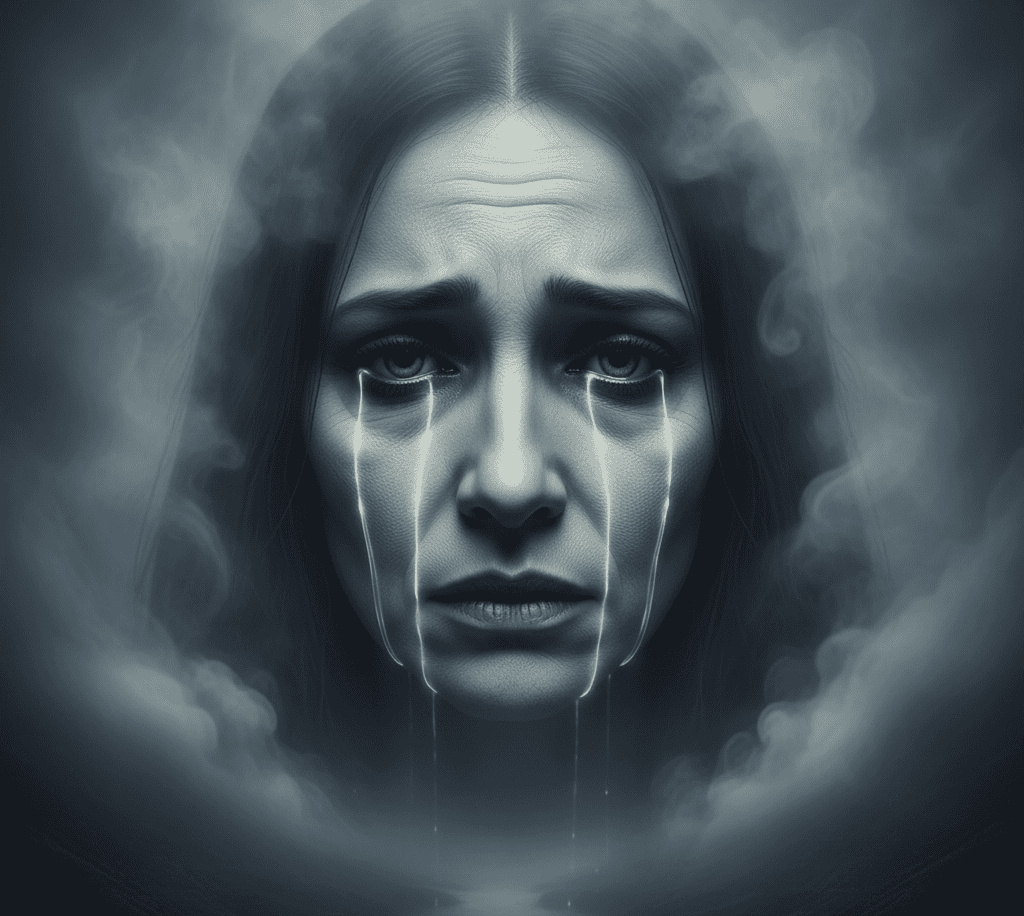La Llorona, or the Weeping Woman, is one of the most enduring legends in Latin American folklore.
Stories of her haunting cries drifting over rivers and lakes have terrified generations.
She is often described as a woman dressed in white, her face obscured by long, dark hair, endlessly searching for the children she lost.
The myths surrounding her are not only terrifying but also full of lessons about love, loss, betrayal, and justice.
Here are ten fascinating myths of La Llorona and the chilling tales she left behind.
1. The Original Tale of Love and Betrayal
The most common version of La Llorona tells of a beautiful young woman who fell in love with a wealthy man.
They married and had children, but the man eventually abandoned her for another. In a fit of despair and rage, she drowned her children in a river.
The horror of what she had done overwhelmed her, and she drowned herself as well.
Denied entry to heaven for her crimes, she became a wandering spirit. She cries by the water, searching for her children, a tragic figure of love twisted into grief and regret.
2. La Llorona as a Warning to Children
Many versions of the legend describe La Llorona as a cautionary figure for children. Parents tell them to behave, or she will appear and take them away.
This version of the myth served as a moral lesson, teaching kids about obedience and respect.
The idea of a ghostly figure hiding near rivers or lakes became a tool for instilling discipline while also instilling fear.
Even today, children grow up hearing her cries and imagining her lurking near water at night.
3. The Spirit Who Walks Alone
Some myths portray La Llorona as completely alone, wandering the world in search of redemption.
She roams rivers, lakes, and canals, wailing endlessly. Her cries are said to echo in the darkness, chilling anyone who hears them.
In this version, she is not actively harmful but instead trapped in her eternal punishment.
Her story reflects the consequences of actions and the weight of guilt, reminding people that certain mistakes can haunt a soul forever.
4. The Protector of Lost Children
Another interpretation of La Llorona is less malevolent and more protective. Some communities believe she seeks to protect children who are lost or in danger.
Mothers warn their children that La Llorona might appear if they wander too far from home.
Her ghostly cries, in this sense, act as a guide to keep children safe from real-world dangers like rivers, wild animals, or unsafe areas.
This duality makes her legend both frightening and strangely comforting.
5. The Curse of Unfaithful Lovers
Several versions emphasize La Llorona’s origins as a woman betrayed by love. The myth warns of the dangers of unfaithful lovers and the consequences of heartbreak left unchecked.
Some say she curses men who betray their partners, appearing to them at night to instill terror. In these stories, her grief transforms into a supernatural force.
Her legend spreads through generations as a reminder of the pain caused by deceit and the lingering power of emotional wounds.
6. La Llorona in Different Regions
La Llorona’s legend varies across Mexico, Central America, and even parts of the southwestern United States.
In some areas, she is a spirit that walks the earth only at night. In others, she is seen in the daytime near rivers and lakes.
Some versions have her eyes glowing red, while others describe her with a pale, ghostly face.
The differences reflect local beliefs, history, and geography, showing how folklore adapts to culture while keeping the core story intact.
7. Encounters with the Weeping Woman
Stories of people encountering La Llorona are widespread. Some claim to have seen her reflection in water or glimpsed her moving silently along riverbanks.
Others describe hearing her cries but never seeing her form. The legend warns that looking directly at her or trying to approach her can bring misfortune or even death.
These encounters add a personal, chilling layer to the myth, giving listeners a sense that La Llorona is never far away.
8. The Myth’s Role in Festivals and Traditions
In some communities, La Llorona is remembered during festivals and cultural celebrations. Her story is shared around fires, during storytelling events, and even in theatrical performances.
In Mexico, the Day of the Dead includes references to spirits like La Llorona, emphasizing the thin line between life and death.
These traditions keep the legend alive and allow people to explore themes of sorrow, morality, and redemption in a communal way.
9. La Llorona as a Symbol of Grief and Regret
Beyond frightening children, La Llorona embodies grief and regret. Her endless wandering is a metaphor for guilt that cannot be escaped.
She represents the weight of actions and the emotional consequences of loss, betrayal, and despair.
Her story resonates with adults as much as with children, reminding us that emotional trauma can have long-lasting, haunting effects.
In this sense, she is more than a ghost; she is a reflection of human sorrow and the struggle to find peace.
10. The Enduring Legacy of La Llorona
La Llorona’s legend has endured for centuries, inspiring books, films, songs, and artwork.
Her story is retold in countless variations, each adding new layers of horror, morality, or tragedy. Her cries echo through generations, a reminder that some stories never die.
The myth continues to evolve, connecting modern audiences with old fears and lessons.
Whether seen as a malevolent spirit, a protective guide, or a symbol of grief, La Llorona remains one of the most powerful and recognizable figures in folklore.

Siempre sentí una fuerte conexión con lo Divino desde mi nacimiento. Como autora y mentora, mi misión es ayudar a los demás a encontrar el amor, la felicidad y la fuerza interior en los momentos más oscuros.

